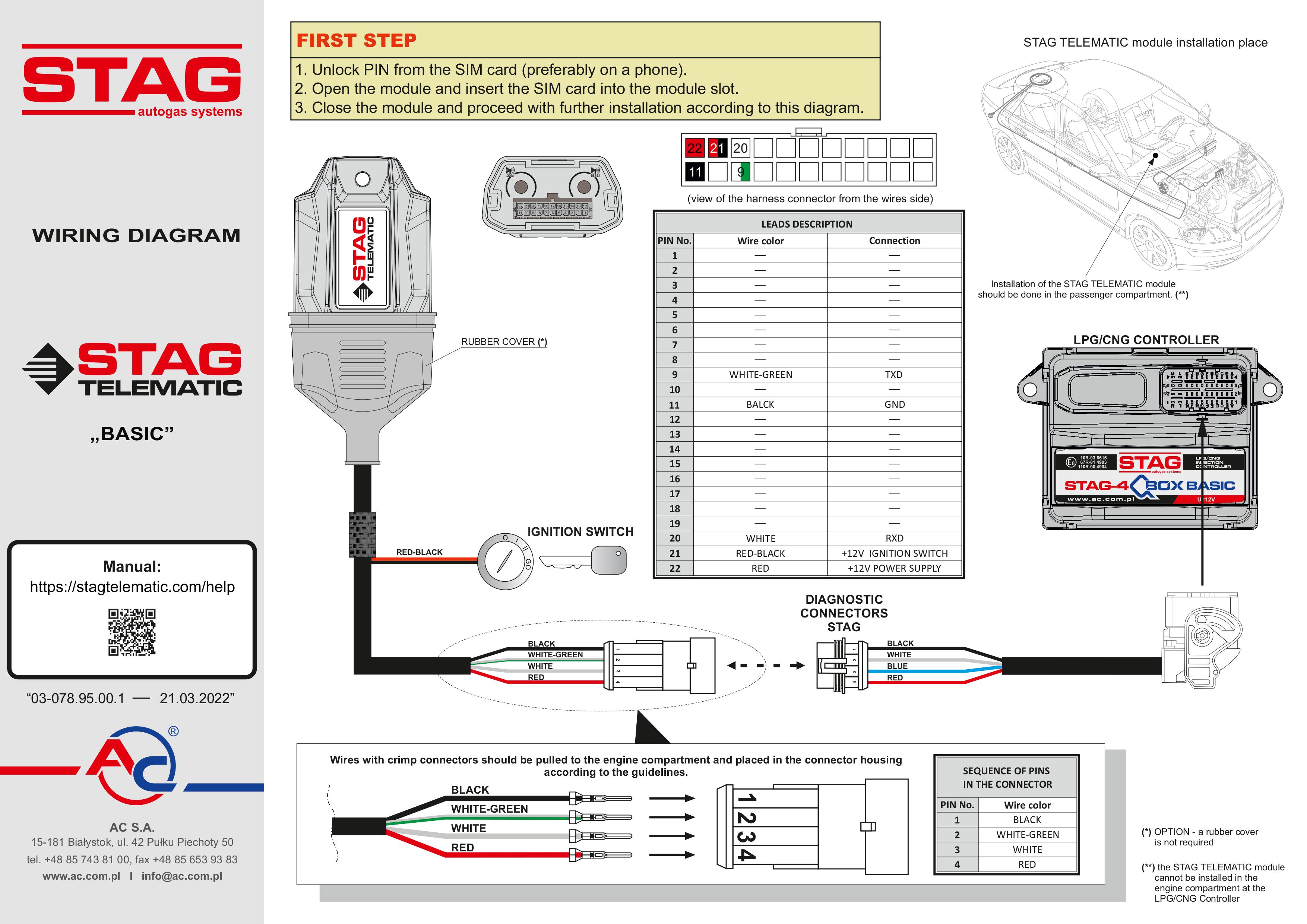GSM module installation guide
1. Connect the module according to the connection diagram
The GSM module is compatible with the gas modules that can be seen on the GSM and GAS module compatibility table
Before connecting the GSM module to the GAS module, make sure you write down the following details. It might be harder to get any of those once you install the GSM module:
- 1. Serial No number of the GSM module (this can be found on the module itself)
- 2. Phone number of the SIM card you have inserted in the module
- 3. Gas tank size in l
- 4. Fuel type (petrol or diesel)
- 5. Average consumption of petrol or diesel per 100km
Once you have written down the details, proceed with the installation as per the following diagram:

Proceed to the next step only if you have managed to connect the module correctly.
2. Check LED and fix problems indicated by it
The GSM module trying to log in to the GSM network is passing through an ordered set of processes. This is indicated by the LED flashing from 9 flashes to 1 flash. If there is an issue in any of the steps, the module will stop in that position. We can count the number of flashes and figure out where the issue might be:
The number of flashes:
- 1 - all ok
- 2 - error connecting to the server
- 3 - server IP deployment error (DNS)
- 4 - error in getting the module IP from the operator
- 5 - GPRS activation error
- 6 - no GSM network
- 7 - no APN configuration for the used SIM card
- 8 - the SIM card requires a PIN (please pull out the SIM from the module and place it into your mobile phone, enter the PIN number, and deactivate the SIM lock via the settings)
- 9 - no SIM card
Example
3 – server IP deployment error (DNS) will look like this:
- LED on: 100ms - 1
- LED on: 100ms - 1
- LED on: 100ms - 1
- LED on: 100ms - 1
- LED on: 100ms - 3
- LED off: 500ms
- LED on: 1500ms - pause
Proceed to the next step only if the LED indicates no problems
